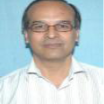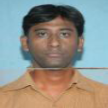International Journal of Image, Graphics and Signal Processing (IJIGSP)
IJIGSP Vol. 6, No. 9, 8 Aug. 2014
Cover page and Table of Contents: PDF (size: 1173KB)
Blur Classification using Ridgelet Transform and Feed Forward Neural Network
Full Text (PDF, 1173KB), PP.47-53
Views: 0 Downloads: 0
Author(s)
Index Terms
Blur classification, Motion blur, Defocus blur, Ridgelet Transform, Neural Network
Abstract
The objective of image restoration approach is to recover a true image from a degraded version. This problem can be stated as blind or non-blind depending upon whether blur parameters are known prior to the restoration process. Blind restoration deals with parameter identification before deconvolution. Though there exists multiple blind restorations techniques but blur type recognition is extremely desirable before application of any blur parameters estimation approach. In this paper, we develop a blur classification approach that deploys a feed forward neural network to categories motion, defocus and combined blur types. The features deployed for designing of classification system include mean and standard deviation of ridgelet energies. Our simulation results show the preciseness of proposed method.
Cite This Paper
Shamik Tiwari, V. P. Shukla, S. R. Biradar, A. K. Singh,"Blur Classification using Ridgelet Transform and Feed Forward Neural Network", IJIGSP, vol.6, no.9, pp.47-53, 2014. DOI: 10.5815/ijigsp.2014.09.06
Reference
[1]J. Vartiainen, T. Kallonen, and J. Ikonen, “Barcodes and Mobile Phones as Part of Logistic Chain in Construction Industry,” The 16th International Conference on Software, Telecommunication, and Computer Networks, pp. 305 – 308, September 25-27, 2008.
[2]ISO/IEC 18004:2000. Information technology-Automatic identification and data capture techniques-Bar code symbology-QR Code, 2000.
[3]J. Rekimoto and Y. Ayatsuka Cybercode, “Designing Augmented Reality Environments with Visual Tags”, proceedings of ACM International Conference on Designing Augmented Reality Environments, 2000.
[4]T. S. Parikh and E. D. Lazowska, “Designing AN Architecture for Delivering Mobile Information Services to the Rural Developing World”, proceedings of ACM International Conference on World Wide Web WWW, 2006.
[5]H. Tong, M. Li, H. Zhang and C. Zhang, “Blur Detection for Digital Images using Wavelet Transform”, proceedings of IEEE international conference on Multimedia and Expo, Vol. 1, pp. 17-20, 2004.
[6]Kai-Chieh Yang, Clark C. Guest and Pankaj Das, "Motion Blur Detecting by Support Vector Machine", proceeding of SPIE, 2005.
[7]I. Aizenberg et al., “Blur Recognition on the Neural Network based on Multi-Valued Neurons”, Journal of Image and Graphics, vol.5, 2000.
[8]Su Bolan, Lu Shijian and Tan Chew Lim, “Blurred Image Region Detection and Classification”, proceedings of the 19th ACM international conference on Multimedia (MM '11), New York, 2011.
[9]Liu Renting, Li Zhaorong and Jia Jiaya, "Image Partial Blur Detection and Classification", IEEE Conference on Computer Vision and Pattern Recognition, pp.1-8, 2008.
[10]C. P. Papageorgiou and T. Poggio, “A Trainable System for Object Detection”, Int. Journal of Comp.Vision, 38(1), pp. 15-33, 2000.
[11]R. Yan and L. Shao, “Image Blur Classification and Parameter Identification Using Two-stage Deep Belief Networks”, British Machine Vision Conference (BMVC), Bristol, UK, 2013.
[12]Shamik Tiwari, V. P. Shukla, S. R. Biradar, Ajay Kumar Singh, “ Texture Features based Blur Classification in Barcode Images”, I.J. Information Engineering and Electronic Business, MECS Publisher, vol. 5, pp. 34-41, 2013.
[13]Shamik Tiwari, V. P. Shukla and Ajay Kumar Singh, “Certain Investigations on Motion Blur Detection and Estimation”, proceedings of International Conference on Signal, Image and Video Processing, IIT Patna, pp. 108-114 , 2012.
[14]E. J. Candes and D.L. Donoho, “Ridgelets – A Surprisingly Effective Non Adaptive Representation for Objects with Edges”, in appear Curves and Surfaces, L.L.S al. ed., Nashville, TN, (Vanderbilt University Press), 1999.
[15]E. J. Candes, L. Demanet, D. L. Donoho and L. Ying, Fast Discrete Ridgelet Transform, Technical Report, CalTech, 2005.
[16]K. Huang and S. Aviyente, "Rotation Invariant Texture Classification with Ridgelet Transform and Fourier Transform", proceeding of IEEE International Conference on Image Processing, pp. 2141-2144, 2006.
[17]Suoping Zhang and Chuntian Zhang, "Application of Ridgelet Transform to Wave Direction Estimation", Congress on Image and Signal Processing (CISP), vol.2, pp.690-693, 2008.
[18]Shamik Tiwari, Ajay Kumar Singh and V. P. Shukla, “Statistical Moments based Noise Classification using Feed Forward Back Propagation Neural Network”, International Journal of Computer Applications 18(2):36-40, March 2011.
[19]Mohsen Ebrahimi Moghaddam and Mansour Jamzad, "Linear Motion Blur Parameter Estimation in Noisy Images Using Fuzzy Sets and Power Spectrum Images", EURASIP Journal on Advances in Signal Processing, Vol. 2007,pp. 1-9, 2007.
[20]Michal Dobeš, Libor Machala and Tomáš Fürst, “Blurred Image Restoration: A Fast Method of Finding the Motion Length and Angle”, Digital Signal Processing, Vol. 20, Issue 6, pp. 1677-1686, ISSN 1051-2004, December 2010.
[21]M. E. Moghaddam, “A Mathematical Model to Estimate Out of Focus Blur”, proceedings of 5th IEEE international symposium on Image and Signal Processing and Analysis, pp. 278-281, 2007.
[22]M. Sakano, N. Suetake and E. Uchino, “A robust Point Spread Function estimation for Out-of-Focus Blurred and Noisy Images based on a Distribution of Gradient Vectors on the Polar Plane”, Journal of Optical Society of Japan, co-published with Springer-Verlag GmbH, Vol. 14, No. 5, pp. 297-303, 2007.
[23]M. N. Do and M. Vetterli, “The Finite Ridgelet Transform for Image Representation”, IEEE Transactions on Image Processing, vol. 12, pp. 16 – 28, 2003.
[24]I. Szentandrási, M. Dubská and A. Herout, “Fast Detection and Recognition of QR codes in High-Resolution Images”, Graph@FIT, Brno Institute of Technology, 2012.



